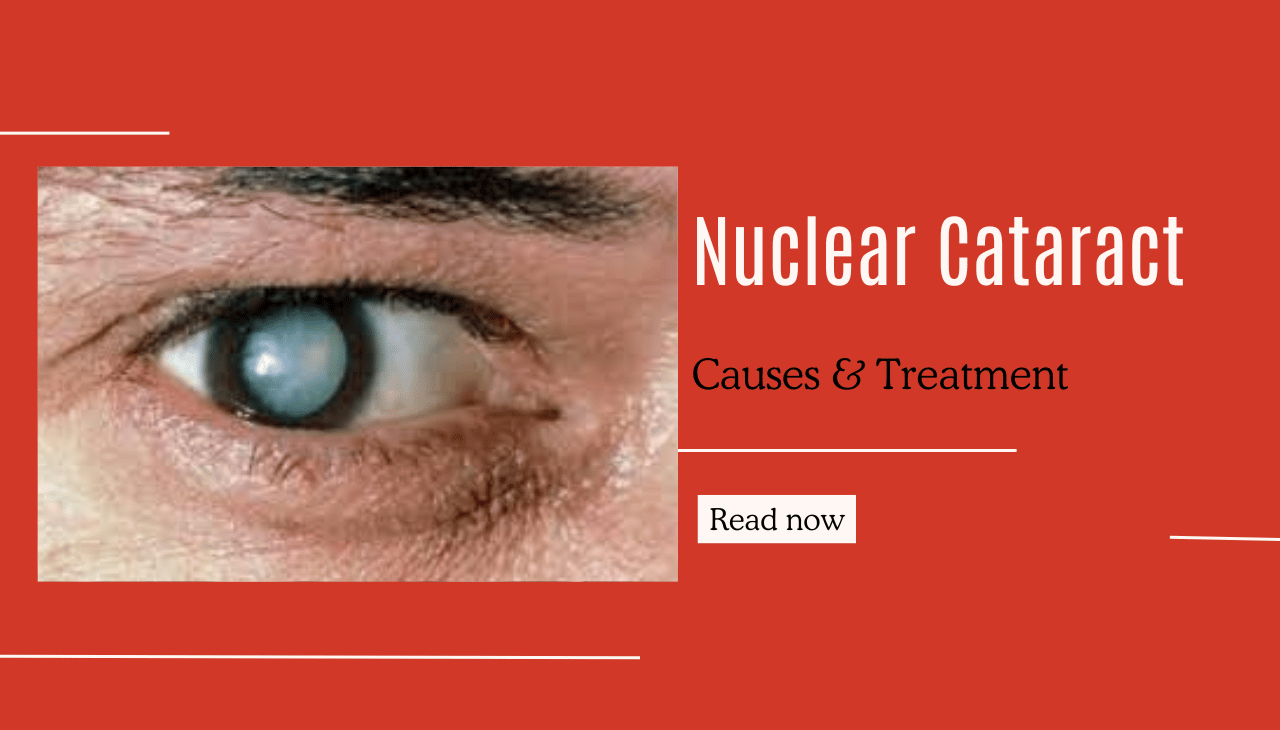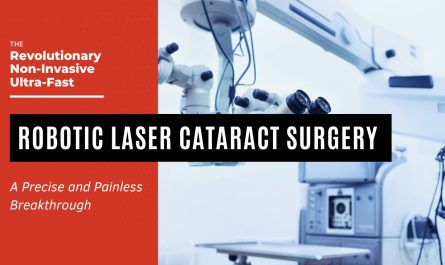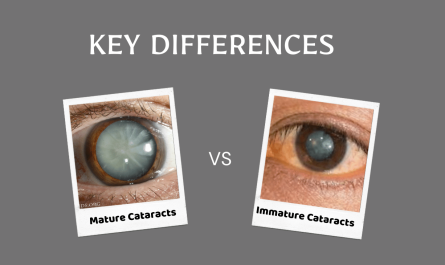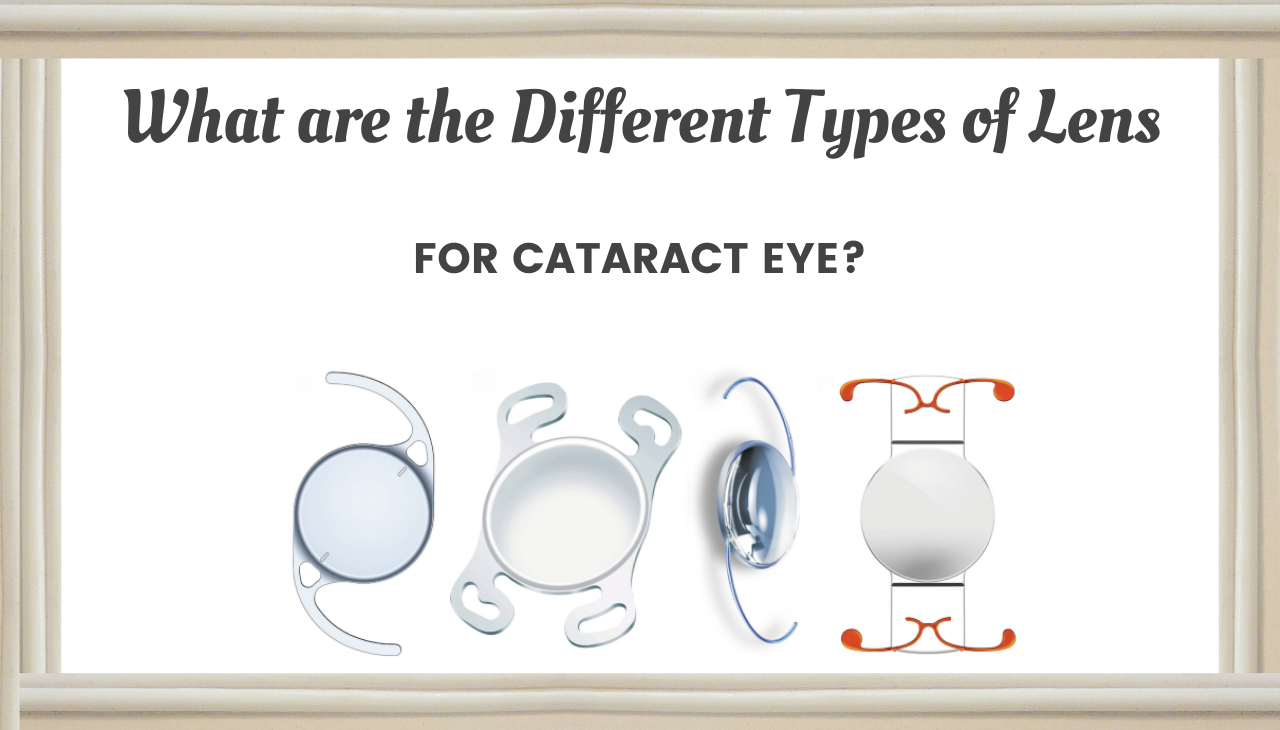Introduction
Have you noticed a gradual decline in your vision, especially difficulty seeing in dim lighting or distinguishing colors? This could be due to a nuclear cataract, a common type of age-related cataract.
Nuclear cataracts develop at the center of the eye’s lens, gradually hardening and turning yellow or brown, leading to vision impairment. Understanding its causes, symptoms, and available treatments is crucial for maintaining healthy eyesight.
In this blog, we’ll explore the basics of nuclear cataracts, their causes and symptoms, effective treatment options, and expert recommendations for prevention and management.
What Is a Nuclear Cataract?

A nuclear cataract is a type of cataract that affects the central (nuclear) part of the eye’s lens. It is the most common form of cataract associated with aging and develops due to the gradual hardening and yellowing of the lens. As the cataract progresses, it may lead to significant vision impairment.
Key Features of a Nuclear Cataract
- Develops in the nucleus (center) of the lens
- Causes yellowing or browning of the lens
- Progresses slowly over time
- May initially improve near vision before leading to blurriness
Causes & Symptoms of Nuclear Cataracts
Causes
Nuclear cataracts primarily develop due to age-related changes in the eye. However, certain factors can accelerate their onset, including:
- Aging: The most common cause, as the lens naturally hardens over time.
- Genetics: A family history of cataracts increases the likelihood of developing them.
- Excessive UV Exposure: Prolonged exposure to sunlight without eye protection can accelerate lens deterioration.
- Smoking & Alcohol Consumption: Both are linked to oxidative stress that damages the eye’s lens.
- Diabetes: High blood sugar levels can contribute to cataract formation.
- Long-term Use of Steroids: Prolonged corticosteroid use can increase the risk of cataracts.
Symptoms
The symptoms of nuclear cataracts develop gradually and worsen over time:
- Blurry or hazy vision
- Difficulty seeing in dim light or at night
- Increased sensitivity to glare from headlights or sunlight
- Faded or yellow-tinted colors
- Frequent changes in prescription glasses
- Temporary improvement in near vision (“second sight”) before vision worsens
Treatment Options for Nuclear Cataracts
1. Early Management
In the early stages, nuclear cataracts may not require immediate treatment. Some strategies to manage symptoms include:
- Stronger prescription glasses or contact lenses
- Using brighter lighting and anti-glare coatings
- Wearing UV-protective sunglasses
- Lifestyle changes like quitting smoking and maintaining a healthy diet
2. Cataract Surgery
As the cataract progresses and vision becomes significantly impaired, surgery is the most effective treatment.
Types of Cataract Surgery:
- Phacoemulsification (Phaco Surgery): A minimally invasive procedure where the cloudy lens is broken up and replaced with an artificial intraocular lens (IOL).
- Small Incision Cataract Surgery (SICS): An advanced technique used for more advanced cataracts.
- Femtosecond Laser-Assisted Cataract Surgery: Uses laser precision to remove the cataract, offering enhanced accuracy.
Expert Recommendations & Prevention Tips
To delay the onset of nuclear cataracts and maintain optimal eye health, experts recommend:
- Regular Eye Exams: Early detection allows for better management.
- UV Protection: Always wear sunglasses that block 100% UVA and UVB rays.
- Healthy Diet: Consume foods rich in antioxidants, vitamins C and E, and omega-3 fatty acids.
- Quit Smoking & Limit Alcohol: Reducing these habits can lower the risk of cataracts.
- Control Blood Sugar Levels: Managing diabetes can prevent cataract progression.
Consultation at Laxmi Eye Hospital
Laxmi Eye Hospital is one of the largest chains of eye hospitals in Mumbai, with over 30 years of excellence in eye care. Our experienced eye specialists provide world-class diagnostic and treatment services for cataracts, LASIK, glaucoma, diabetic eye conditions, cornea diseases, and retina treatments.
Our Locations:
- Dombivli: Laxmi Eye Institute, SS Business Park, Gharda Circle, Azde Gaon, Dombivli East, Mumbai, Maharashtra 421201
- Kharghar: Office 108-110, Anant CHS Plot 31, Sector 04, Kharghar, Navi Mumbai, Maharashtra 410210
- Panvel: Mulla Hamid Rd, Old Panvel, Panvel, Navi Mumbai, Maharashtra 410206
- Kamothe: Shop No 26/27, Near ICICI Bank, Pratik Gardens, Plot No 153-165, Sector 34, Navi Mumbai, Maharashtra 410209
For appointments, visit our website or call our clinics.
FAQs
1. Can nuclear cataracts be prevented? While they cannot be entirely prevented, lifestyle changes like wearing UV-protective sunglasses and maintaining a healthy diet can slow their progression.
2. How do I know if I need cataract surgery? If your vision is significantly impaired and affecting daily activities, your eye doctor will recommend surgery.
3. Is cataract surgery painful? No, cataract surgery is painless as it is performed under local anesthesia.
4. How long does recovery take after cataract surgery? Most patients experience improved vision within a few days, but complete recovery can take a few weeks.
5. Are there any risks with cataract surgery? Complications are rare but may include infection, swelling, or minor discomfort, which can be managed with medications.
Conclusion
Nuclear cataracts are a common age-related eye condition that can impact daily life if left untreated. While early management can help, cataract surgery remains the most effective solution for restoring clear vision. Regular eye exams and a healthy lifestyle can play a crucial role in maintaining eye health.
If you or a loved one is experiencing symptoms of cataracts, consult the expert ophthalmologists at Laxmi Eye Hospital for a comprehensive evaluation and treatment plan. Your vision deserves the best care!




